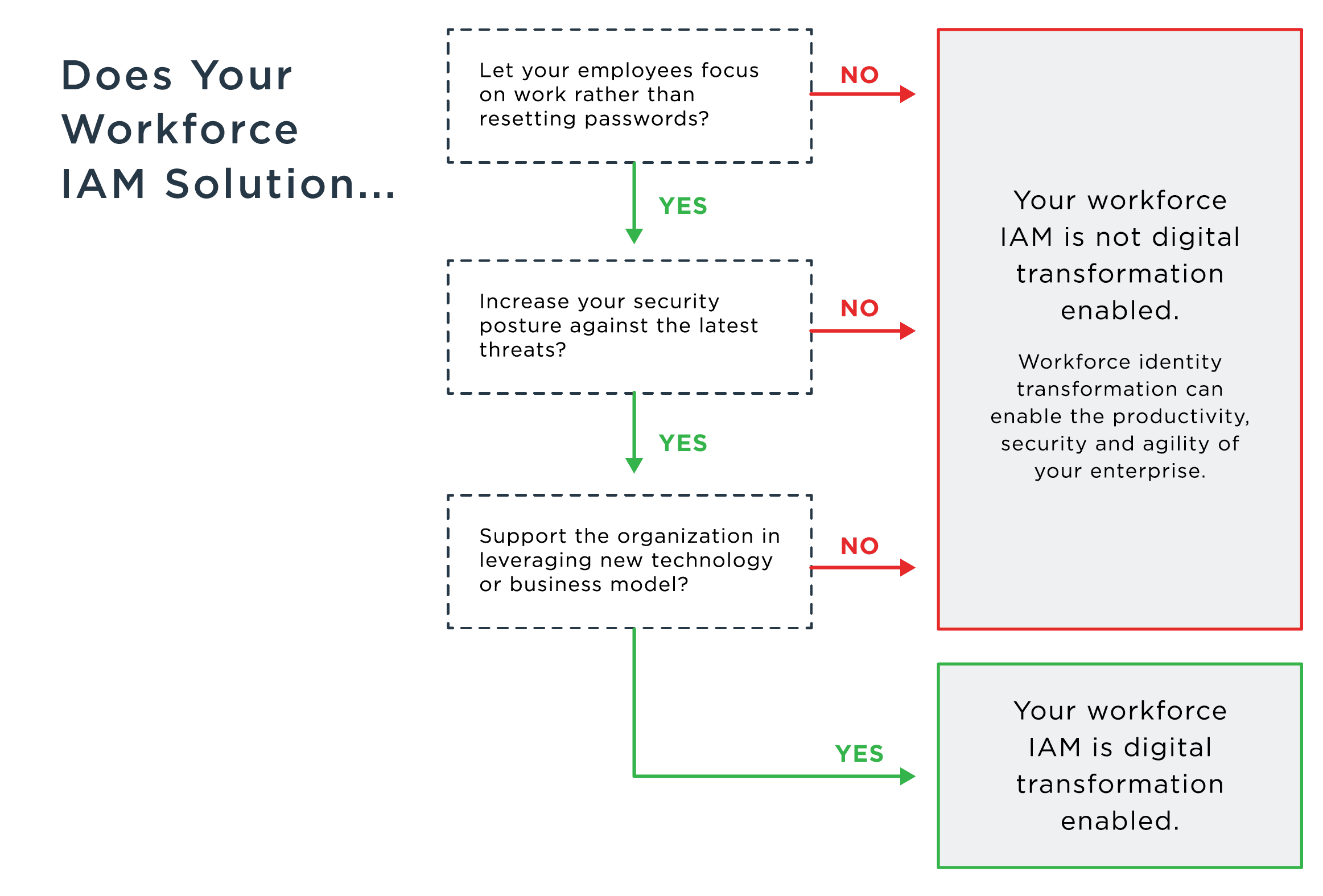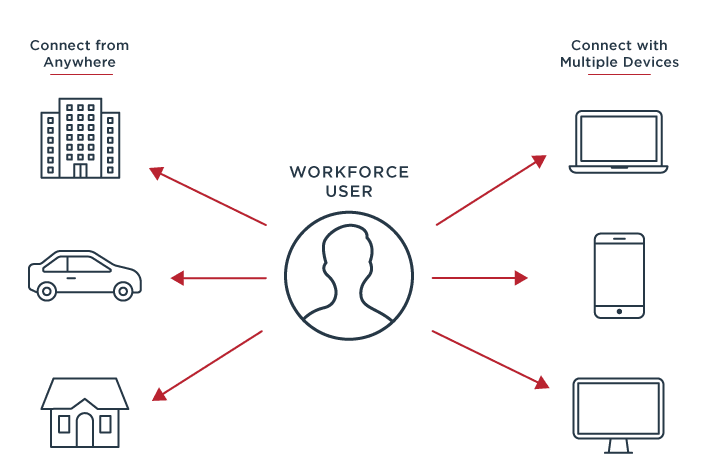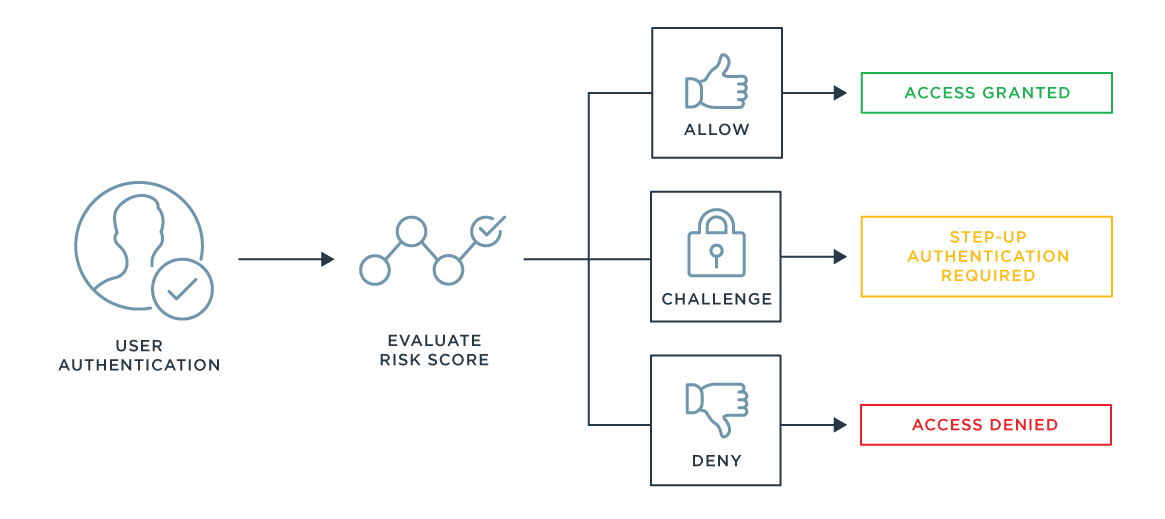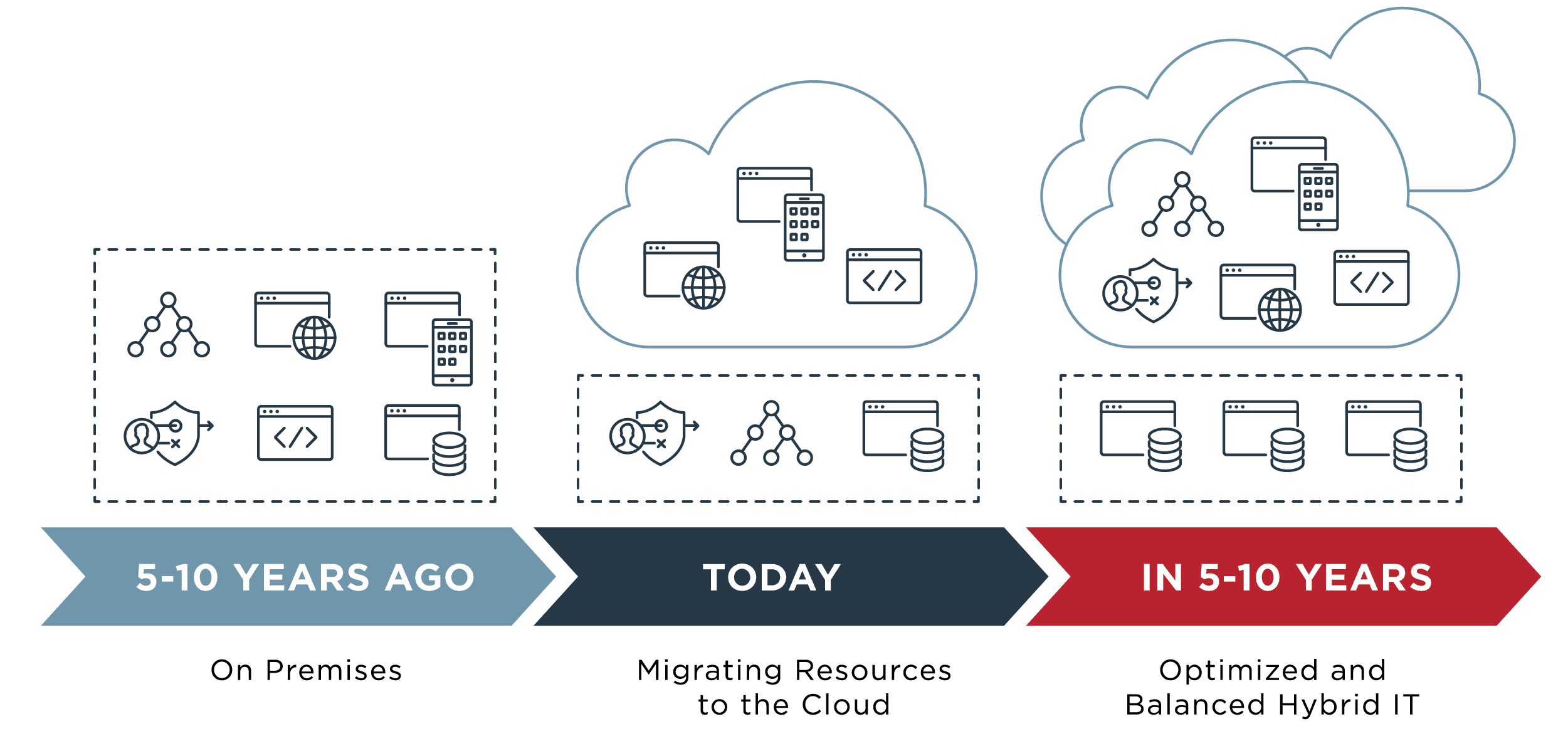How Workforce Identity Can Ensure Your Digital Transformation Success
Digital transformation is critical to moving your business forward. It gives you the power to drive needle-moving improvements by streamlining processes to accelerate time to market, create competitive advantage and develop new revenue streams.
But digital transformation success isn’t a foregone conclusion. In fact, only 16% of organizations say digital transformation improved performance and was sustainable, according to a McKinsey Global Survey. The missing link for many is in giving their workforce access to the digital resources and information they need. Case in point, the same McKinsey survey found that those who invest in digital tools to provide this access are 2.1X more likely to experience digital transformation success.
Organizations who invest in digital tools to make information more accessible across their organization are 2.1X more likely to experience digital transformation success.
Source: Unlocking Success in Digital Transformation Survey, McKinsey
If you’re challenged to provide your workforce with streamlined access today, digital transformation will only amplify those challenges and could cause initiatives to come to a screeching halt. You can effectively double your odds of success by accompanying digital transformation with a transformation of your workforce access. Workforce identity transformation involves giving your employees seamless access, while at the same time minimizing friction and strengthening your enterprise’s security.
The balance between frictionless access and strong security is a delicate balance to strike, but it isn’t as difficult as you may think. By making workforce identity the new security perimeter, you can provide the secure access your workforce needs for successful digital transformation outcomes. With an identity-centric, Zero Trust security approach, you can ensure:
- A productive workforce able to get work done anywhere, anytime
- A secure enterprise with access controls in place to prevent costly data breaches
- An agile enterprise architecture that can easily adapt to new business models and requirements

Read on to learn how you can transform workforce identity to enable a Zero Trust security model and ultimately set you up for digital transformation success.
3 Ways Workforce Identity Supports Productivity and Zero Trust Security
1: Supports Increased Productivity
Increasing productivity and improving efficiency are among the top drivers of digital transformation. But your workforce needs frictionless access to resources to realize these gains. If they must create and remember passwords for multiple resources, they’re spending more time just getting access than they need to.
Shifting to an identity-centric, Zero Trust security strategy holds the promise of giving the right employees access to the right digital tools at the right time, even in a remote work environment. One of the earliest steps of your Zero Trust journey will be to assess and likely modernize your existing workforce identity capabilities.Workforce identity transformation enables greater workforce productivity and efficiency by providing capabilities like:
- One-click access to every resource, across any application, any cloud, any directory, in any situation
- Self-service portals so employees can reset their own passwords
- Adaptive authentication that uses context and intelligence to trigger MFA for only high-risk activities

2. Frees Up IT Resources
Requiring workforce users to create and remember multiple login credentials to get access isn’t just slowing them down, it’s slowing down your IT team, too. The time spent trying to support legacy systems, resolve password reset requests and support application teams in onboarding applications steals attention away from the digital transformation initiatives that will move your business forward.
Workforce identity transformation frees up your IT team by providing time-saving features like:
- Centralized authentication services, with an authentication authority for any use case
- Industry standard support, limiting the need for customization
- Self-service options for password resets
- Delegated administration to application teams with a central portal to onboard apps
- Fewer systems for teams to maintain
3. Protects Against Cyber Threats
While digital transformation can open up a host of new opportunities for your enterprise, it can also expose you to new vulnerabilities. An increasingly mobile and diverse workforce requires a Zero Trust approach to security to ensure you’re protected against growing digital threats, and that approach involves shifting to identity-centered security rather than network perimeter-based security. Enterprise IT must keep pace with growing demands or risk having business units resort to shadow IT and siloed approaches that expose security risks.
Workforce identity transformation allows you to shore up security by enabling:
- A foundation for Zero Trust, which can further reduce risk and shrink your attack surface
- Adaptive multi-factor authentication that dynamically assesses risk and responds accordingly
- Secure passwordless login capabilities, reducing your reliance on passwords
- Self-service application integration templates to onboard applications to identity management

How Legacy IAM Systems Hold You Back
Many enterprises are fast-tracking digital transformation initiatives in response to COVID-19. For IT organizations stretching legacy identity and access management (IAM) systems to their breaking point, these uncertain times are a wake-up call.
55% of IT decision makers believe the biggest challenge of digital transformation is over-reliance on legacy technology and lack of the right tech tools
Source: “Legacy Tech Delays Digital Transformation,” eMarketer
As you take on digital transformation initiatives, the limitations of legacy IAM tools become increasingly apparent. Insufficient and outdated multi-factor authentication (MFA), single sign-on (SSO) and web access management (WAM) tools slow the onboarding of new resources due to the lack of support for standard protocols. You may have multiple employee directories thanks to mergers and acquisitions without a simple way to synchronize profile data across multiple business units.
Transforming or modernizing workforce identity doesn’t always require ripping out legacy identity investments. Modern, enterprise-grade IAM capabilities are built to seamlessly coexist and integrate with mission-critical existing IAM tools, either indefinitely or until your organization executes a phased, zero-downtime migration down the road. This helps ensure a smooth, rapid IAM modernization without business interruption.
Modern workforce IAM empowers you to take an identity-centric approach with Zero Trust to give your employees access to only the digital resources they need to get their job done in your dynamic business environment. You’re able to provide the access needed for digital transformation—without creating friction or security vulnerabilities—and tailor workforce identity to address your unique enterprise requirements.
Workforce Identity Should Be a Business Enabler
Increase Business Agility
Digital transformation is forcing your enterprise to evolve rapidly. In this fast-paced environment, DevOps is being used to speed up the delivery of software and rapidly scale systems, but identity security is often an afterthought. At the same time, organizations are deploying more applications to the cloud to take advantage of reduced infrastructure costs and increased performance. But unless you’re comfortable with a rip-and-replace approach, you also have to support coexistence with legacy systems.
Workforce identity helps you keep pace with the needs of your enterprise by:
- Enabling automated identity security in DevOps
- Empowering IT teams to leverage new technologies, not be the bottleneck in the process
- Simplifying migration and coexistence with legacy systems
Support a Smart Move to the Cloud
Cloud-first is the core philosophy behind many digital transformation initiatives. But moving to the cloud is rarely that simple. Your cloud migration can’t happen overnight, nor should it. More likely, you’ll need to support a hybrid IT environment as new resources are onboarded and older resources are moved on a schedule that is approved by the business. This could be temporary or it be a longer term solution if you have critical legacy resources that are too risky or expensive to migrate and are best maintained on premises.
Workforce identity transformation allows you to:
- Support multi-cloud, hybrid IT and on-premises deployment
- Extend your identity infrastructure to the cloud to achieve rapid autoscaling, consistency and uptime
- Deploy and manage IAM in the cloud your way

Transform Workforce Identity, Transform Your Business
Digital transformation has the potential to completely transform your business. But success isn’t a sure thing. To avoid the pitfalls, you need to get workforce identity security right first and take on a Zero Trust security posture. IT teams are leading the charge to empower the workforce to be productive while keeping the enterprise secure and agile to meet new challenges in rapidly changing business environments.
By transforming workforce identity, you will add measurable business value. If you’re looking for an easy way to measure and articulate the business case, use our interactive Workforce Identity Business Value Assessment tool to get a ballpark estimate of how much a boost in productivity, security and agility is worth to your business financially.

